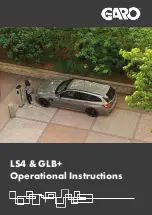
Black plate (58,1)
Chevrolet Silverado Owner Manual - 2013 - crc 1st edition - 4/5/12
3-58
Seats and Restraints
6. If the child restraint has a top
tether, follow the child restraint
manufacturer's instructions
regarding the use of the top
tether. See
Lower Anchors and
Tethers for Children (LATCH
System) on page 3
‑
47
for more
information.
7. Before placing a child in the
child restraint, make sure it is
securely held in place. To check,
grasp the child restraint at the
safety belt path and attempt to
move it side
‐
to
‐
side and back
‐
and
‐
forth. When the child
restraint is properly installed,
there should be no more than
2.5 cm (1 in) of movement.
To remove the child restraint,
unbuckle the vehicle safety belt and
let it return to the stowed position.
If the top tether is attached to a top
tether anchor, disconnect it.
Securing Child Restraints
(Center Front Seat
Position)
{
WARNING
A child in a child restraint in the
center front seat can be badly
injured or killed by the frontal
airbags if they inflate. Never
secure a child restraint in the
center front seat. It is always
better to secure a child restraint in
a rear seat.
Do not use child restraints in the
center front seat position.
Securing Child Restraints
(Right Front Seat
Position)
With Passenger Sensing
System
This vehicle has airbags. A rear
seat is a safer place to secure a
forward-facing child restraint. See
Where to Put the Restraint on
page 3
‑
45
.
In addition, the vehicle may have a
passenger sensing system which is
designed to turn off the right front
passenger frontal airbag under
certain conditions. See
Passenger
Sensing System on page 3
‑
32
and
Passenger Airbag Status Indicator
on page 5
‑
19
for more information
on this, including important safety
information.
A label on the sun visor says,
“
Never put a rear-facing child seat in
the front.
”
This is because the risk to
the rear-facing child is so great,
if the airbag deploys.
















































